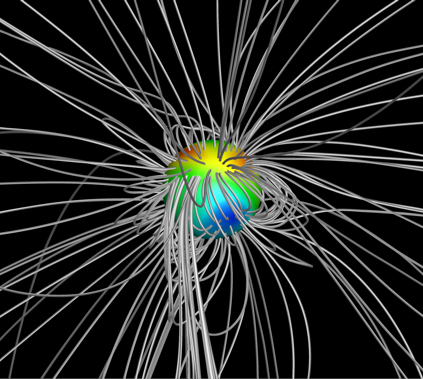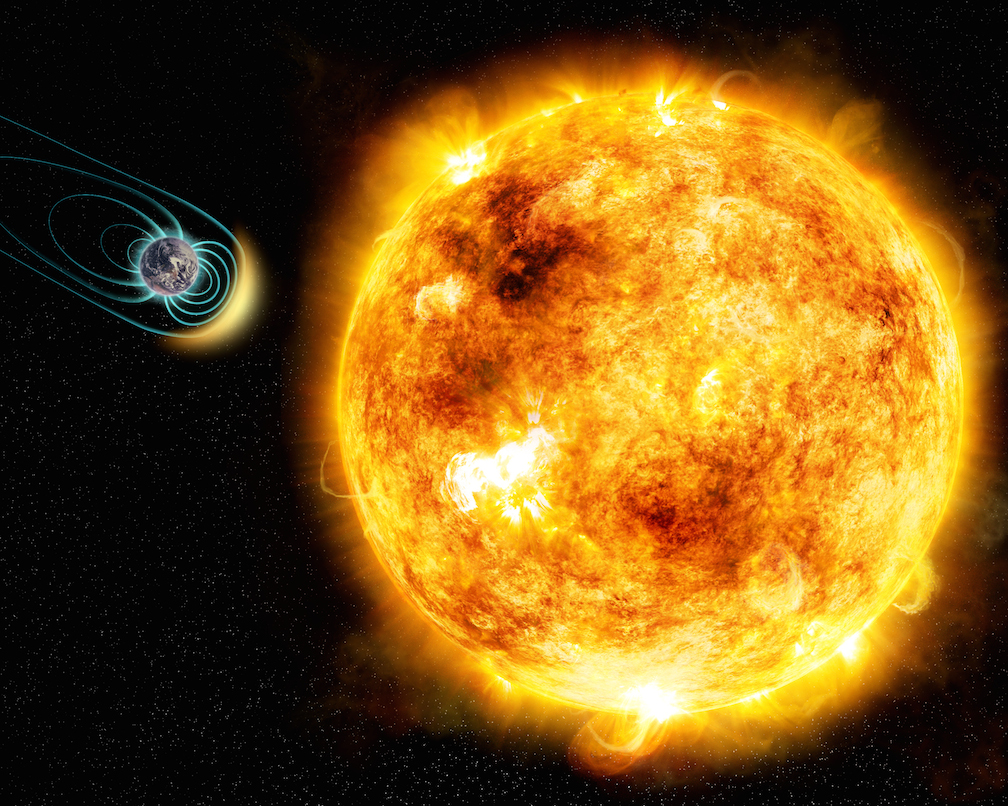Image List
-

This computer model shows the magnetic field lines of the star Kappa Ceti as gray lines looping out from the star's surface. This young, Sun-like star generates a stellar wind 50 times stronger than our Sun's. As a result, any potentially habitable planet would need a magnetic field to protect its atmosphere.
CfA / Do Nascimento et. al. and TCD / A. Vidotto -

Observations taken with the 2.0-meter Bernard Lyot Telescope at Pic du Midi Observatory in France show that Kappa Ceti is a Sun-like star with an age of 400 - 600 million years.
Jose-Dias Do Nascimento -

In this artist's illustration, the young Sun-like star Kappa Ceti is blotched with large starspots, a sign of its high level of magnetic activity. New research shows that its stellar wind is 50 times stronger than our Sun's. As a result, any Earth-like planet would need a magnetic field in order to protect its atmosphere and be habitable. The physical sizes of the star and planet and distance between them are not to scale.
M. Weiss/CfA